Last Saturday I time-travelled to Hogan’s Alley and landed smack in 1948. Geographically, I wasn’t really that far away. I was standing inside a large box in Vancouver’s Woodward’s building using my body as a joy-stick to move through the streets of an area that’s been buried under the Georgia Viaduct since 1972.
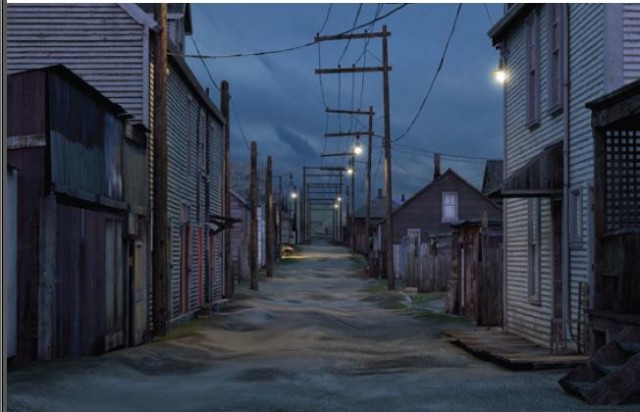
The National Film Board teamed up with Vancouver artist Stan Douglas, and last year released an app that turned the second Hotel Vancouver and Hogan’s Alley into two digital worlds. This month they upped the ante with a complete virtual reality experience.
There is no headgear, no buttons to push, no levers to move. I stood inside the box and waited while the computer captured my skeleton and eye movements. Within seconds the blank walls became Hogan’s Alley, and by moving slightly in one direction, I could travel down the street, check out the architecture, listen in on conversations, climb up stairs, even walk around inside a brothel.
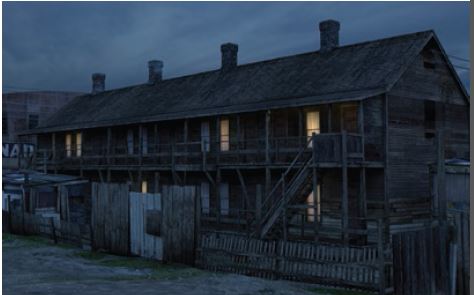
Loc Dao, the NFB’s executive producer, says there are four projectors in the room that use a technology called projection mapping and give you that sense that you’re walking in real time through a digitally recreated space.
The images are based on a handful of archival photographs and newspaper pictures that exist, supplemented with interviews and oral histories. A team of artists, animators and modelers then used digital carpentry to construct each piece of the scene to give the sense that you’re inside a three-dimensional, gritty, post-war Vancouver.
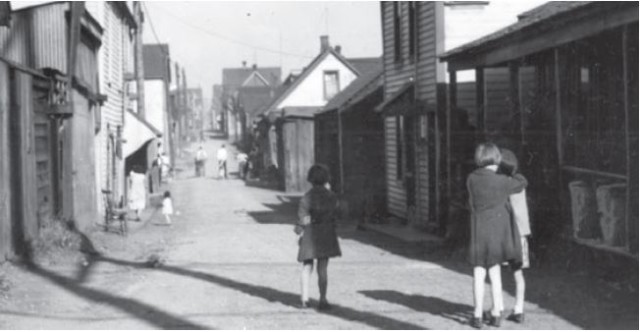
When it comes to making history exciting and accessible this technology is leading edge, and a glimpse into what’s possible—eventually adding touch, smell, sound effects, even the ability to reach in and grab something.
The choice of year and location is interesting. Hogan’s Alley was once a hangout for Vancouver’s black community, while the second Hotel Vancouver was an extraordinarily beautiful building that was taken over as a squat by homeless WW2 vets, and then demolished in 1949.
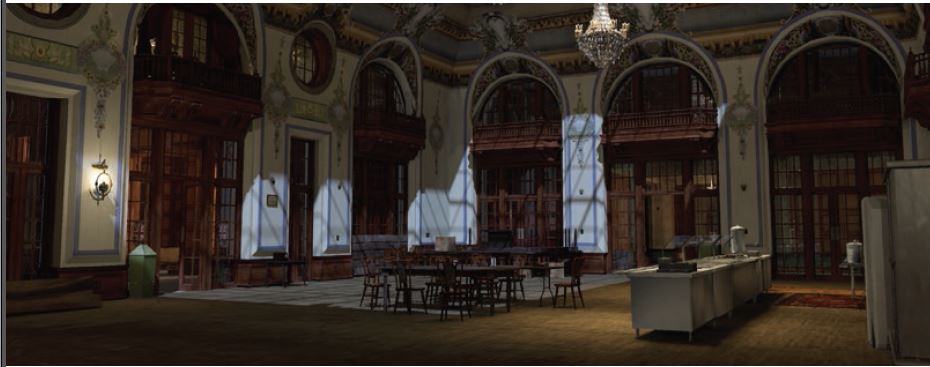
“What was going on in these locations was actually symbolic in what was going on all over North America,” says Loc. “We were very interested in a project that dealt with social issues and the theme of history repeating itself.”
As far as the actual installation, it’s off-the-shelf, consumer grade hardware—an Apple Mac mini; a Mac pro server and iPad Air. The magic is all in the software.
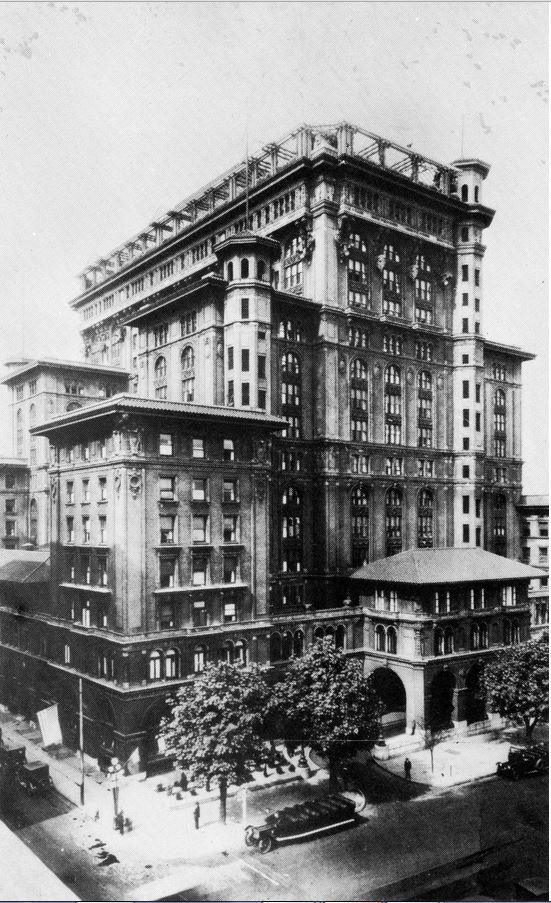
And that’s the other exciting part. Potentially you could plug in any environment—the Pantages or the Empress Theatre for example, and it could be a way of preserving the memories of these long demolished buildings.
You could even archive experiences. Be at Victory Square when Mayor Gerry McGeer reads the riot act or sit in a courtroom with Police Chief Walter Mulligan and watch the Royal Commission into police corruption unfold.
The total cost for the development of the app and the installation including all the research and the artwork came to $700,000 and change.
The interactive installation is at Woodward’s atrium until October 16 and then moves to SFU’s Surrey campus.
© All rights reserved. Unless otherwise indicated, all blog content copyright Eve Lazarus.



2 comments on “Hidden Pasts, Digital Futures: Vancouver Circa1948”
I love the term ‘digital carpentry.’ The Hotel Vancouver one has more historical cred because it’s based on actual images; Hogan’s Alley is pretty speculative in every aspect but, hey, that’s what graphic novelists do, too! The Hotel Vancouver actually became an official hostel after its rough beginnings as a squat (it was militia headquarters during the war). I have a friend, born in 1946, who spent for the first couple of years of her life in a room on the 6th floor with her parents before they were able to get VLA housing, initially at 23rd and Fraser and later in Fraserview when the CMHC opened it up.
[…] Hidden Pasts, Digital Futures […]